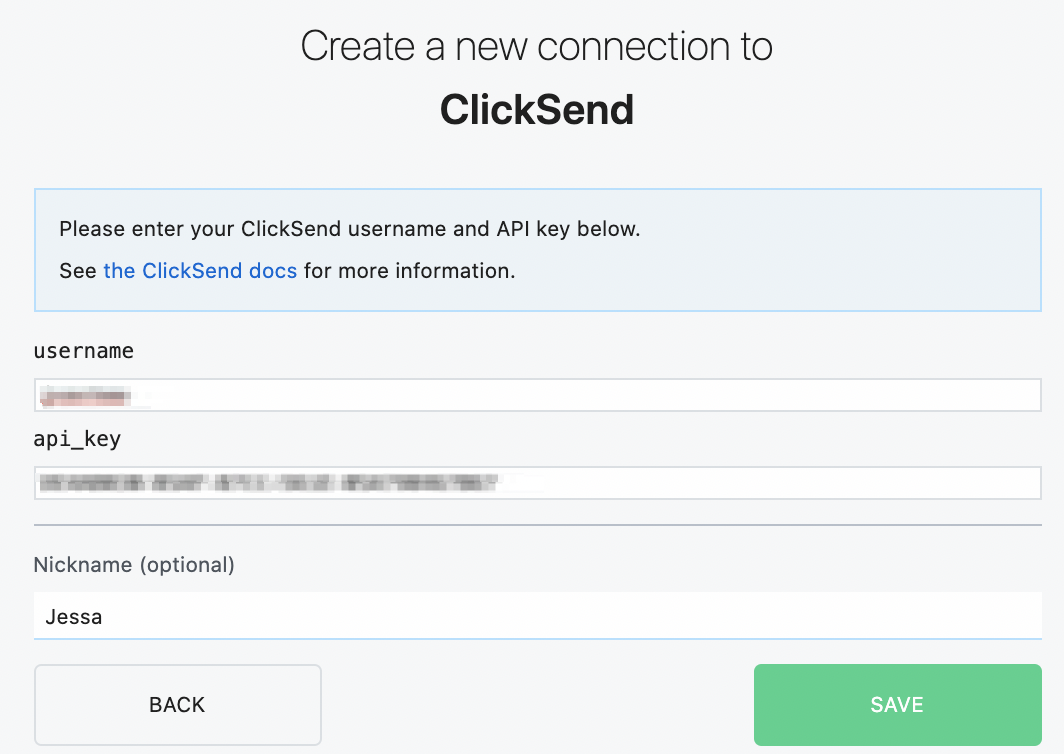What do you want to automate
with ClickSend SMS and MongoDB?
Prompt, edit and deploy AI agents that connect to ClickSend SMS, MongoDB and 3,000+ other apps in seconds.
Trusted by 1,000,000+ developers from startups to Fortune 500 companies
Popular Ways to Connect ClickSend SMS with MongoDB#
Popular ClickSend SMS and MongoDB Triggers#
Emit new event for each new incoming SMS message received. See the documentation
Emit new event when a new voice message is received or sent. See the documentation
Popular ClickSend SMS and MongoDB Actions#
Creates a new contact in a specific list. See the documentation
Create a new document in a collection of your choice. See the docs here
Sends a new MMS to one or multiple recipients. See the documentation
Execute an aggregation pipeline on a MongoDB collection. See the documentation
Overview of ClickSend SMS#
The ClickSend SMS API unlocks the potential to integrate robust messaging capabilities into your workflows. With Pipedream, you can not only send SMS messages programmatically but also automate notifications, streamline communication based on events, and much more. Whether you're confirming orders, alerting staff, or engaging with customers, ClickSend and Pipedream make these tasks seamless.
Connect ClickSend SMS#
import { axios } from "@pipedream/platform"
export default defineComponent({
props: {
clicksend: {
type: "app",
app: "clicksend",
}
},
async run({steps, $}) {
return await axios($, {
url: `https://rest.clicksend.com/v3/account`,
auth: {
username: `${this.clicksend.$auth.username}`,
password: `${this.clicksend.$auth.api_key}`,
},
})
},
})
Overview of MongoDB#
The MongoDB API provides powerful capabilities to interact with a MongoDB database, allowing you to perform CRUD (Create, Read, Update, Delete) operations, manage databases, and execute sophisticated queries. With Pipedream, you can harness these abilities to automate tasks, sync data across various apps, and react to events in real-time. It’s a combo that’s particularly potent for managing data workflows, syncing application states, or triggering actions based on changes to your data.
Connect MongoDB#
import mongodb from 'mongodb'
export default defineComponent({
props: {
mongodb: {
type: "app",
app: "mongodb",
},
collection: {
type: "string"
},
filter: {
type: "object"
}
},
async run({steps, $}) {
const MongoClient = mongodb.MongoClient
const {
database,
hostname,
username,
password,
} = this.mongodb.$auth
const url = `mongodb+srv://${username}:${password}@${hostname}/test?retryWrites=true&w=majority`
const client = await MongoClient.connect(url, {
useNewUrlParser: true,
useUnifiedTopology: true
})
const db = client.db(database)
const results = await db.collection(this.collection).find(this.filter).toArray();
$.export('results', results);
await client.close()
},
})Community Posts#

